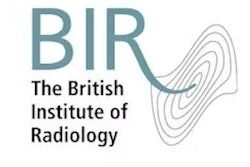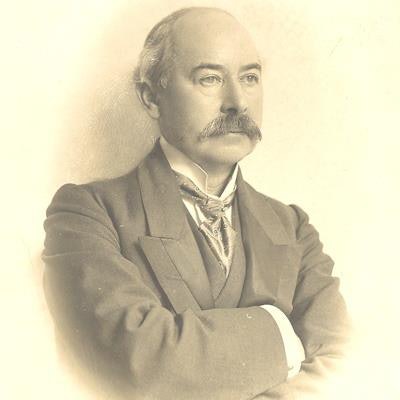
The British Institute of Radiology (BIR) is celebrating a highly significant anniversary. It's the oldest radiological society in the world, and its history begins when news of Röntgen's discovery reached Britain on 6 January 1896.
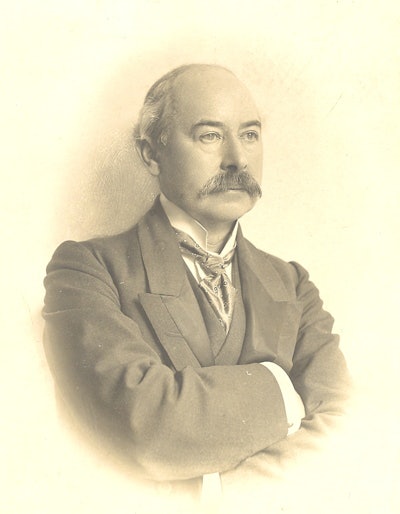 Silvanus P. Thompson.
Silvanus P. Thompson.A meeting to start a new society in order to study the x‑rays was held on 18 March 1897. It was decided that membership should "include all who are interested in the scientific study of the Röntgen Rays," and this decision was to prove crucial to the ethos of the organization. As past president of the BIR Roger Berry said, the Institute "was multidisciplinary at its core." The first general meeting was held on 3 June 1897 at the Medical Society of London and the inaugural meeting held on 5 November 1897, in the old St Martin's Town Hall, with Silvanus Thompson as the first president. The X-Ray Society became the Röntgen Society, and the Archives of Clinical Skiagraphy was adopted by the society as a journal. This journal, started by Sidney Rowland in May 1896, continues today as the British Journal of Radiology.
For a long time, the society met at a variety of locations, including the Institution of Electrical Engineers. And toward the end of the Great War, it moved to the Royal Society of Arts. The period during and after the war was not an easy time for scientific societies and there was considerable financial stress; however, the society kept up a full program of Thursday evening meetings throughout the year.
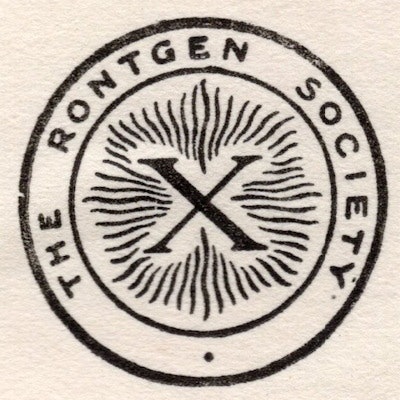 The original logo of the Röntgen Society.
The original logo of the Röntgen Society.The concept of a radiological institute was first suggested in 1906 and revived again in 1917. The British Association for the Advancement of Radiology and Physiotherapy (BARP) was founded in 1917 and the Diploma in Medical Radiology and Electrotherapy (DMRE) was set up at the University of Cambridge as the first examination. The BARP formed an institute in 1924 with broad aims, including providing a meeting place for those interested in radiology, providing information of all kinds and having an international influence. Part of the reason for having a physical home was to house a reference library and a museum of radiographic films and lantern slides, and so a house on Welbeck Street was acquired. The modern institute was created in 1927 as an amalgamation of the Röntgen Society and the British Institute of Radiology. Many had worked hard for a long time to enable this merger to come about.
 The 1915 radiation protection recommendations.
The 1915 radiation protection recommendations.The Röntgen Society and BIR were involved in many projects, and perhaps the most significant was in November 1915 when in response to progressive concerns on radiation safety, the Society issued "Recommendations for the Protection of X-ray Operators," and the seven recommendations are still relevant today. These recommendations of 1915 were in part a summary of current good practice and paved the way for international standards and recommendations. A further major event was when Godfrey Hounsfield announced the new CT scanner at the annual meeting in 1972.
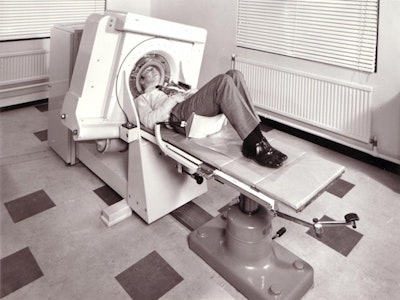 The first CT scanner, the Mark 1 EMI Scanner.
The first CT scanner, the Mark 1 EMI Scanner.The BIR moved into Portland Place in 1982, with meeting rooms and library facilities. Welbeck Street had been the home since 1922. The time at Welbeck Street had been very happy and it was the center of British radiology. The BIR had only ever leased Welbeck Street for limited terms, and it might have appeared to lack a permanent home. There was sadness when the BIR left the house in Portland Place; however, this facilitated the move into a modern digital organization in 2013 with offices in Farringdon.
From the very beginning, the three pillars of the Institute have been meetings, publications, and a library. However, the nature of these pillars is now radically different from those of the last century for a variety of reasons. For the institute to have a successful future, the nature of meetings, publications and library had to change. It's fascinating to note that as an organization, it now more resembles the structure of early 20th century. The Institute has had many changes during its long history, and we will continue to change to meet the contemporary needs of our members. Meetings, journals, and books can now be viewed online and digitally. However, the aims are the same as those in 1897.
A webinar was held on 8 June 2022 called "The BIR at 125." I will be in conversation with Dr. Emily Grossman, who is a bestselling science author, internationally acclaimed public speaker, and much-loved TV personality. In 2018, Emily was named as the second Honorary STEM Ambassador, alongside astronaut Tim Peake, for her pioneering work in science, technology, engineering, and math (STEM) education and as a role model to young people.
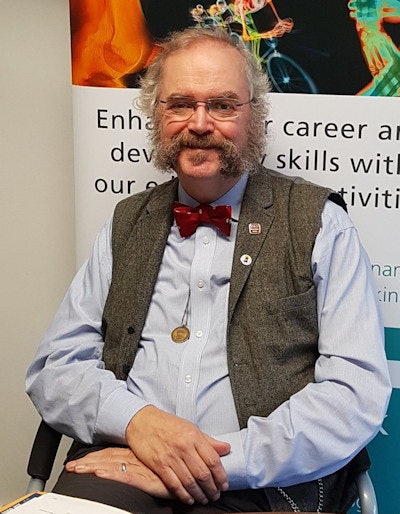 Dr. Adrian Thomas. Image courtesy of the BIR.
Dr. Adrian Thomas. Image courtesy of the BIR.Details are available at the BIR website.
Dr. Adrian Thomas is chairman of the International Society for the History of Radiology and honorary historian at the British Institute of Radiology.
The comments and observations expressed herein do not necessarily reflect the opinions of AuntMinnieEurope.com, nor should they be construed as an endorsement or admonishment of any particular vendor, analyst, industry consultant, or consulting group.




